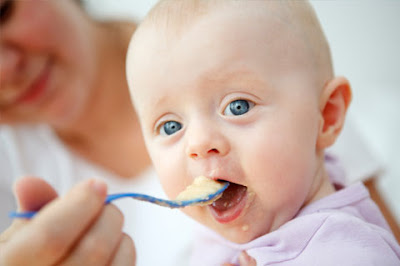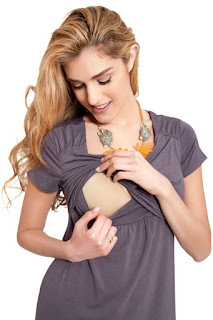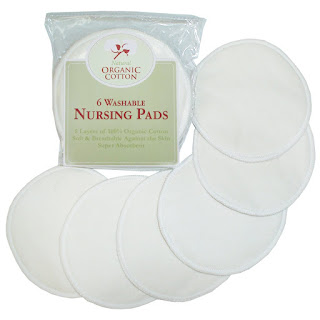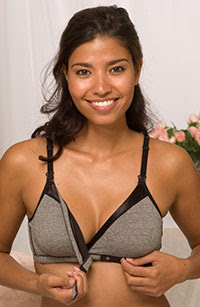Weaning a baby is a complex time of sadness for some mothers, while others cannot wait to close the all-night buffet. Whatever your view, the following tips will guide you through the weaning process.
When to Wean
While the World Health Organization encourages mothers to breast feed for at least two years, society often frowns on mothers nursing past twelve months of age. Don’t let that influence your decision to nurse your child as long as is best for your baby and you. The longer you nurse, the more benefits the baby receives, and the more health benefits your body derives. In the end, however, the choice to wean is a personal decision based on what is best for you and your child.
How to Wean Infants
Infants not entirely accustomed to the breast are the easiest to wean. Begin by replacing one feeding with bottled breast milk or formula. Continue replacing feedings until eventually you have completely switched to bottle.
How to Wean Babies
Babies present a slightly greater challenge in the weaning department. They know that Mama means nursing and they really don’t want that silly plastic contraption. In order to avoid any fits of refusal, it is best to have another caregiver give the bottle. Be sure that a child old enough to have solids is receiving enough nutrition to compensate for the removal of breast milk. Up until twelve months of age, solids are only a supplemental food, with the breast milk or formula–not cow’s milk–making up the bulk of the child’s nutrition. If possible, try a gradual approach, just as with an infant.
Generally, the before bed nursing session is the most cherished and the most difficult to eliminate. Offering another source of security, letting a baby fall asleep by another caregiver for comfort, replacing Mommy with a pacifier, walking the baby to bed, or establishing a new bedtime routine of a sweet song, snuggle, and book are all techniques worth trying. Giving Daddy night-time duty will decrease the baby’s middle-of-the-night dependence on Mama’s breast as well.
How to Wean Toddlers
Weaning a toddler is similar to weaning an older baby, but with the advantage of being able to distract the child with nutritious finger foods, a sippy cup, or an activity that your child enjoys. Often the “don’t offer, don’t refuse” technique will lead to an effortless child-led weaning.
How to Wean Older Children
Older children that have nursed for two, three or even four years often don’t understand the societal expectation that only babies should nurse. Giving them a special place to nurse will cut down on nursing opportunities. If nursing is not convenient for the child, he will often be led to wean himself. Some parents will bribe the child or will use a special occasion or trip as a distraction from nursing.
Cold Turkey
While cutting the child off cold turkey is not the best method for babies and infants, it can be done. It will result in engorged breasts, so express enough milk for comfort, place cold compresses on the sore breasts, and give it a week. The milk will gradually subside.
Nursing is a special and brief moment in the mother-child relationship, triggering extra maternal instincts and instilling a bond most people can never understand. When you do decide to wean, be sure you are not influenced by misguided advice. Rather, stay focused on what is best for you and your baby.
When to Wean
While the World Health Organization encourages mothers to breast feed for at least two years, society often frowns on mothers nursing past twelve months of age. Don’t let that influence your decision to nurse your child as long as is best for your baby and you. The longer you nurse, the more benefits the baby receives, and the more health benefits your body derives. In the end, however, the choice to wean is a personal decision based on what is best for you and your child.
How to Wean Infants
Infants not entirely accustomed to the breast are the easiest to wean. Begin by replacing one feeding with bottled breast milk or formula. Continue replacing feedings until eventually you have completely switched to bottle.
How to Wean Babies
Babies present a slightly greater challenge in the weaning department. They know that Mama means nursing and they really don’t want that silly plastic contraption. In order to avoid any fits of refusal, it is best to have another caregiver give the bottle. Be sure that a child old enough to have solids is receiving enough nutrition to compensate for the removal of breast milk. Up until twelve months of age, solids are only a supplemental food, with the breast milk or formula–not cow’s milk–making up the bulk of the child’s nutrition. If possible, try a gradual approach, just as with an infant.
Generally, the before bed nursing session is the most cherished and the most difficult to eliminate. Offering another source of security, letting a baby fall asleep by another caregiver for comfort, replacing Mommy with a pacifier, walking the baby to bed, or establishing a new bedtime routine of a sweet song, snuggle, and book are all techniques worth trying. Giving Daddy night-time duty will decrease the baby’s middle-of-the-night dependence on Mama’s breast as well.
How to Wean Toddlers
Weaning a toddler is similar to weaning an older baby, but with the advantage of being able to distract the child with nutritious finger foods, a sippy cup, or an activity that your child enjoys. Often the “don’t offer, don’t refuse” technique will lead to an effortless child-led weaning.
How to Wean Older Children
Older children that have nursed for two, three or even four years often don’t understand the societal expectation that only babies should nurse. Giving them a special place to nurse will cut down on nursing opportunities. If nursing is not convenient for the child, he will often be led to wean himself. Some parents will bribe the child or will use a special occasion or trip as a distraction from nursing.
Cold Turkey
While cutting the child off cold turkey is not the best method for babies and infants, it can be done. It will result in engorged breasts, so express enough milk for comfort, place cold compresses on the sore breasts, and give it a week. The milk will gradually subside.
Nursing is a special and brief moment in the mother-child relationship, triggering extra maternal instincts and instilling a bond most people can never understand. When you do decide to wean, be sure you are not influenced by misguided advice. Rather, stay focused on what is best for you and your baby.
Labels:
Weaning























